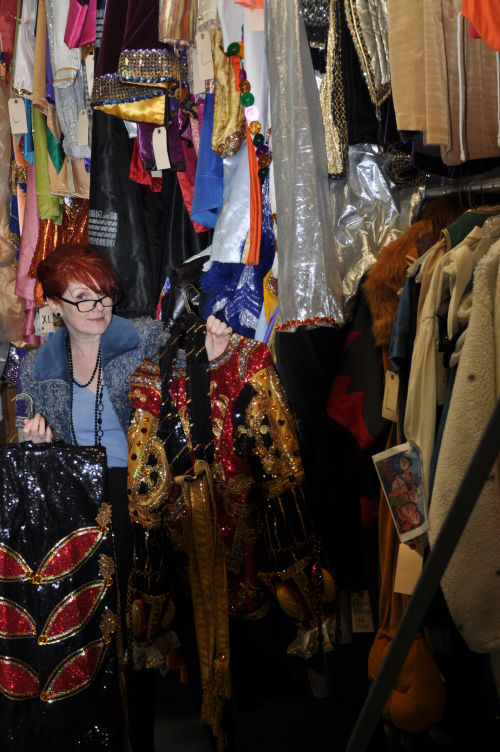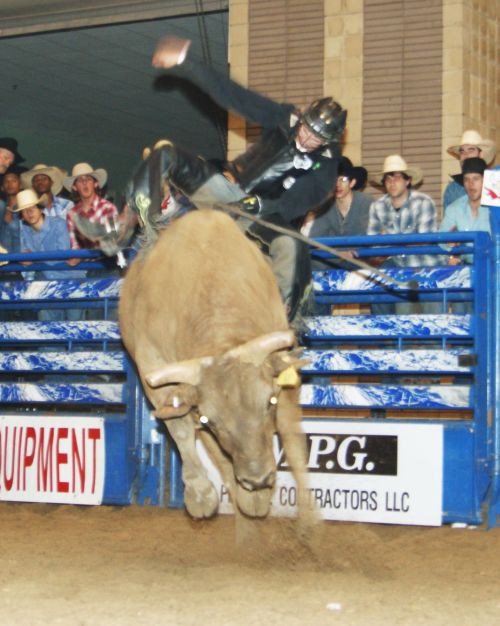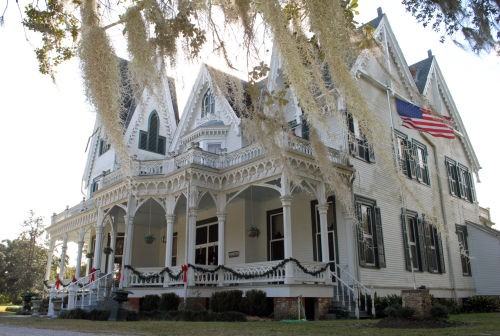
Eschew everyday attire for Carnival-appropriate costumes
January 7, 2014
Unpredictable, in violent bursts framed by horns
January 7, 2014For Lee and Susan Shaffer, opening Ardoyne for tours has so far proven to be a positive experience, although also quite new.
“This is the house I grew up in,” said Lee, an entrepreneur who also serves on the Terrebonne Levee and Conservation Board. His great-grandfather, John D. Shaffer, had the home designed and constructed in 1894, as a surprise for his wife, who was visiting France at the time. “We will readjust and re-evaluate but so far it has been a really, really positive experience. People are visiting from Kentucky, the Carolinas, Utah, a lot of people, generous and sweet people.”
Other family members opened a different plantation house, Magnolia, a few years back. They had receptions and other events, but did not continue doing so.
“It got old for them after a while,” Lee said.
Stay-overs and food service are not on the menu for now at Ardoyne, but the Shaffers say they are open to such possibilities in the future, choosing for now to take one step at a time.
If the unique architecture or the genteel interior of Ardoyne looks familiar, it is because the house has played a role in several movies, including “The Skeleton Key,” a gothic horror film set in the bayou country. The house – and the family – also was involved with the making of “Crazy In Alabama” and “Deadline!”; it was also a site for the 2009 Lifetime movie “Tribute.”
Unlike Southdown, the landmark Minor family home further south on La. 311, Ardoyne and the sugar operation directly run from it are relics of the post-Civil War age. The land was in sugar prior to the war as well, however. During those times families like the Shaffers and the Minors were key players in the economy of Terrebonne Parish, with some of their plantations dating back to the 1830s.
John D. Shaffer, son of a noted Terrebonne planter who became a state senator, bought the land in 1888. After telling his wife he would build her a “cottage,” Shaffer had the 21-room mansion constructed during her absence. It was designed by the New Orleans architectural firm of W. C. Williams and Bros. The cypress and pine used for construction was cut on the property and then properly milled in St. Louis before coming back to Terrebonne as completed features for the house.
While meant as a pleasant surprise, family members say it wasn’t quite taken that way by Mrs. Shaffer, and that she was rather cross.
The house was anything but “a cottage.”
Its 75-foot tower was – and is – considered a soaring structure. That the scale was so grand should have surprised nobody, since Ardoyne was built – and named – for a Scottish castle. The name, translated from the Scottish Gaelic, means “little knoll.”
Other architecture and design features include 16-foot high ceilings, gothic gasoliers, hand-carved fireplace griffins, hand-stamped wallpaper and original tiles.
The furniture and various decorative features are family treasures, many of which have been in the house for years.
While Ardoyne did not witness the tragedies related to slavery, the war that ended it or the reconstruction that followed, there were difficulties nonetheless.
In 1906 the first recorded case of yellow fever related to what became a widespread outbreak in Terrebonne was at Ardoyne.
Displayed at the house are forms of scrip – currency used by plantation workers who lived on the property. It was a form of payment that some survivors of the pre-mechanization sugar industry say kept them tied to the land whether they wanted to stay or not, creating its own form of wage-slavery.
Ardoyne is also known in relation to a topic that is attractive to many tourists in Louisiana. The sound of “Uncle Benny’s boots,” it is said, can be heard from the attic.
Family members have never seen a “woman in white” that some ghost guides say can be seen on the grounds. But some – including one of Lee’s aunts – has acknowledged the “Uncle Benny” stories.
Relatives said “Uncle Benny” could be heard returning “to retrieve his dusty boots.”
The boots are estimated to be 150 years old.
Other sounds attributed to hauntings have been said by family members more likely the structure settling, or just the moans and groans associated with any old house.
With its unique design and stately oaks, the Shaffers say their home is a perfect place for making and maintaining memories, and offer the grounds for photography sessions related to weddings, graduations and other happy events.
Photos with the Easter Bunny will be featured April 5th when Ardoyne hosts an “Egg-stravaganza.” An egg hunt, games for kids, craft displays and live music are on tap.
Proceeds will be donated to the non-profit Discovery Playhouse children’s museum. A Pirate’s Day event including a costume contest is being planned for October.
Ardoyne Plantation, a Victorian gothic home build in 1894 along La. Highway 311 in Schriever, is now open for guided tours.







